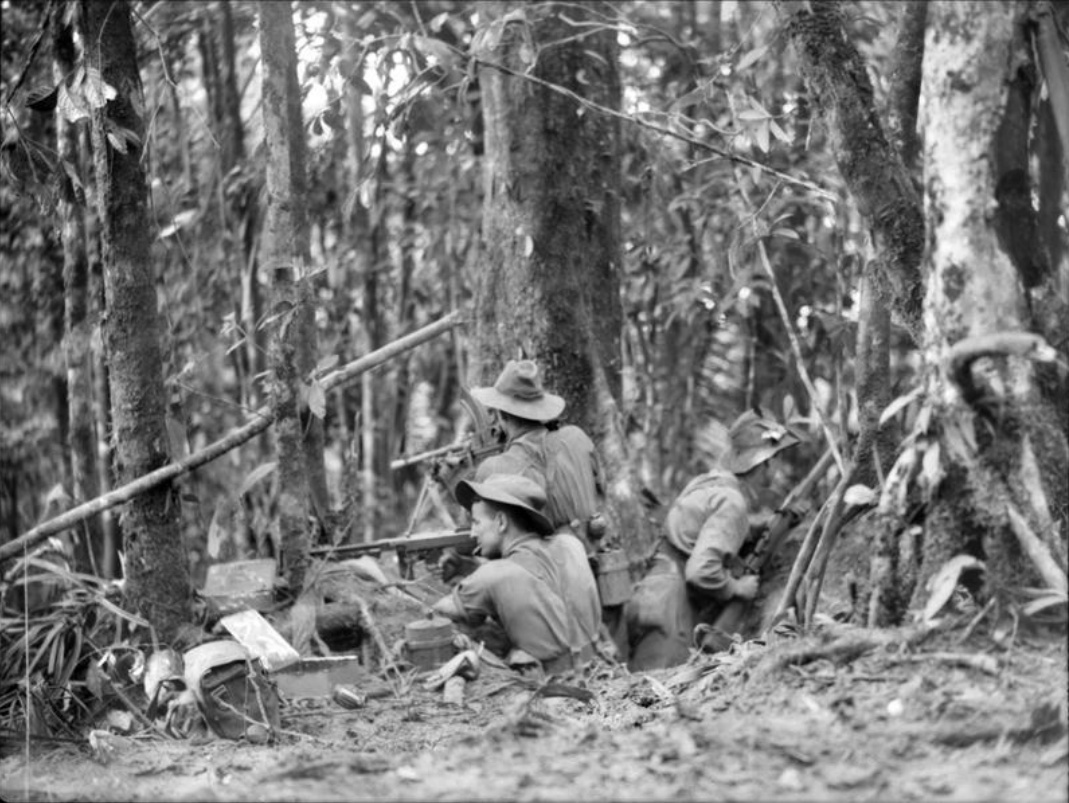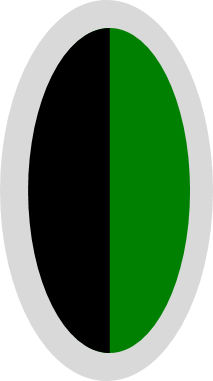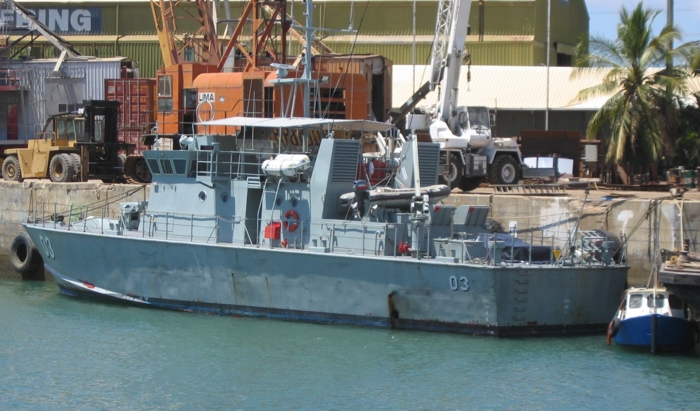|
29th Brigade (Australia)
The 29th Brigade was an infantry brigade of the Australian Army that was raised for service during World War II. Formed in late 1941 as part of the Militia, the brigade was initially formed for home defence in response to Japan's entry into the war. Composed of three Queensland-based infantry battalions and various supporting elements, the brigade initially undertook defensive duties around Townsville in 1941–1942 before deploying to New Guinea in 1943. There, the brigade undertook garrison duties before taking part in the Salamaua–Lae campaign. After a period of almost 18 months overseas, the brigade's elements were returned to Australia for a period of rest and reorganisation before later being assigned to the Bougainville campaign in 1944–1945. After the war, the brigade was disbanded in December 1945, along with its component units. History Raised on 20 December 1941 under the command of Brigadier Thomas Louch for service during World War II, the 29th Brigade was formed ... [...More Info...] [...Related Items...] OR: [Wikipedia] [Google] [Baidu] |
Infantry
Infantry is a military specialization which engages in ground combat on foot. Infantry generally consists of light infantry, mountain infantry, motorized infantry & mechanized infantry, airborne infantry, air assault infantry, and marine infantry. Although disused in modern times, heavy infantry also commonly made up the bulk of many historic armies. Infantry, cavalry, and artillery have traditionally made up the core of the combat arms professions of various armies, with the infantry almost always comprising the largest portion of these forces. Etymology and terminology In English, use of the term ''infantry'' began about the 1570s, describing soldiers who march and fight on foot. The word derives from Middle French ''infanterie'', from older Italian (also Spanish) ''infanteria'' (foot soldiers too inexperienced for cavalry), from Latin '' īnfāns'' (without speech, newborn, foolish), from which English also gets ''infant''. The individual-soldier te ... [...More Info...] [...Related Items...] OR: [Wikipedia] [Google] [Baidu] |
7th Brigade (Australia)
7th Brigade is a combined arms formation or brigade of the Australian Army. The brigade was first raised in 1912 as a Militia formation, although it was re-formed as part of the First Australian Imperial Force in early 1915 for service during World War I. It subsequently saw action at Gallipoli and on the Western Front during the war. Following the end of the war the brigade was disbanded in 1919 before being re-raised in 1921 as part of the Citizens Force (later known as the Militia). During World War II the brigade took part in the fighting against the Japanese in New Guinea and on Bougainville. Today, the 7th Brigade is part of Forces Command and is based in Brisbane, Queensland and is composed mainly of units of the Regular Army. While the brigade has not deployed as a whole unit since World War II, component units have deployed on operations to East Timor, the Solomon Islands, Iraq and Afghanistan. History The 7th Brigade traces its origins to 1912, when it was forme ... [...More Info...] [...Related Items...] OR: [Wikipedia] [Google] [Baidu] |
7th Division (Australia)
The 7th Division was an infantry division of the Australian Army. It was formed in February 1940 to serve in World War II, as part of the Second Australian Imperial Force (2nd AIF). The division was raised on the British establishment of nine infantry battalions per division and consisted of two new brigades and three of the original 12 battalions of the 6th Division forming the third brigade. The division is sometimes known by the nickname "The Silent Seventh", due to a perception that its achievements were unrecognised, in comparison to the other Australian divisions. The origin of this belief appears to be censorship of the part played by the 7th Division in the fierce fighting in the 1941 Syria-Lebanon campaign.James 2017 The 7th Division along with the 6th and 9th Australian Divisions were the only divisions to serve in both the Middle East and the South West Pacific Area. It was disbanded in 1946, following the end of the war. History Formation The 7th Division was the s ... [...More Info...] [...Related Items...] OR: [Wikipedia] [Google] [Baidu] |
162nd Infantry Regiment (United States)
The 162nd Infantry Regiment is a regiment of the Oregon Army National Guard with headquarters in Springfield, Oregon. In January 2006 as part of the Army's transformation towards a modular force, the 1st Battalion, 162nd Infantry Regiment was inactivated. Many members continued to serve with the 2nd Battalion and other units within the 41st Infantry Brigade Combat Team. Origins The 162nd Infantry Regiment traces its lineage back to 20 May 1887, when the Infantry Brigade of the Oregon National Guard was organized from existing state militia companies. The brigade included the 1st, 2nd, and 3rd Infantry Regiments. Companies G and K of the 2nd Regiment were detached and reorganized as the Separate Battalion, Infantry in 1893, but the battalion was discontinued in 1896 and the two companies became separate units within the brigade. The 3rd Regiment was reduced to the 3rd Battalion, Infantry in March 1896. During the Spanish–American War, the Infantry Brigade was mustered int ... [...More Info...] [...Related Items...] OR: [Wikipedia] [Google] [Baidu] |
Battle Of Mount Tambu
The Battle of Mount Tambu was a series of actions fought in the Salamaua area of the Territory of New Guinea between Allied and Japanese forces, which took place between 16 July and 18 August 1943, during World War II. The battle formed part of the wider Salamaua–Lae campaign and was fought in the final stages of the campaign, which had seen a combined Australian and US force advance from Wau towards Salamaua following the repulse of the Japanese attack on Wau in late January and early February 1943. After several frontal assaults on the position by Australian and US infantrymen were rebuffed by determined Japanese defenders, an indirect approach was sought and flanking moves were undertaken to cut off the Japanese supply route along the Komiatum Track. This succeeded in eventually forcing the Japanese off the position as they withdrew to avoid encirclement. Background In late January and early February 1943, Japanese efforts to secure a vital airfield at Wau were checked b ... [...More Info...] [...Related Items...] OR: [Wikipedia] [Google] [Baidu] |
Buna, Papua New Guinea
Buna is a village in Oro Province, Papua New Guinea. It was the site in part, of the Battle of Buna–Gona during World War II, when it constituted a variety of native huts and a handful of houses with an airstrip. Buna was the trailhead to the Kokoda Track leading to Kokoda. History Buna was the site of a handful of houses, a dozen or so native huts, and an airfield acting as a trailhead up the Kokoda Track to the foothills village of Kokoda (see Kokoda Track campaign). During World War II, Imperial Japanese troops invaded on 21–22 July 1942 and established it as a base (see Buna Airfield). Six months later,William Manchester, "''American Caesar''", 1978, Little Brown Company, 793 pages, Buna was recaptured by the Australian and American armies during the Battle of Buna-Gona on 2 January 1943 ''Pacific Wrecks'' Retrieved October 16, 2016 ... [...More Info...] [...Related Items...] OR: [Wikipedia] [Google] [Baidu] |
Goodenough Island
Goodenough Island in the Solomon Sea, also known as Nidula Island, is the westernmost of the three large islands of the D'Entrecasteaux Islands in Milne Bay Province of Papua New Guinea. It lies to the east of mainland New Guinea and southwest of the Trobriand Islands. It is roughly circular in shape, measuring with an area of and a shoreline of . From a coastal belt varying in width from in width, the island rises sharply to the summit of Mount Vineuo, above sea level, making it one of the most precipitous islands in the world. The small outlier Wagifa Island lies to the south-east of the island, and is included within Goodenough's administration. Climate and vegetation Like much of New Guinea, the climate is tropical with high temperatures and humidity throughout the year. The northwest monsoon season lasts from December to March and brings sudden rain squalls. From May to October southeasterly winds are cooler and more gentle. Tropical cyclones are infrequent. ... [...More Info...] [...Related Items...] OR: [Wikipedia] [Google] [Baidu] |
Battle Of Milne Bay
The Battle of Milne Bay (25 August – 7 September 1942), also known as Operation RE or the Battle of Rabi (ラビの戦い) by the Japanese, was a battle of the Pacific campaign of World War II. Japanese marines, known as ''Kaigun Tokubetsu Rikusentai'' (Special Naval Landing Forces), with two small tanks attacked the Allied airfields at Milne Bay that had been established on the eastern tip of New Guinea. Due to poor intelligence work, the Japanese miscalculated the size of the predominantly Australian garrison and, believing that the airfields were defended by only two or three companies, initially landed a force roughly equivalent in size to one battalion on 25 August 1942. The Allies, forewarned by intelligence from Ultra, had heavily reinforced the garrison. Despite suffering a significant setback at the outset, when part of their small invasion force had its landing craft destroyed by Royal Australian Air Force aircraft as they attempted to land on the coast behind ... [...More Info...] [...Related Items...] OR: [Wikipedia] [Google] [Baidu] |
61st Battalion (Australia)
The 61st Battalion was an infantry battalion of the Australian Army. It was originally raised in 1917 during the First World War but was disbanded the same year without seeing active service. Later it was re-raised as a part of the Militia in 1938 in Brisbane, Queensland. Upon the outbreak of the Second World War they initially undertook garrison duties in Australia, however, in 1942 they were deployed to New Guinea where they took part in the Battle of Milne Bay, during which the Japanese were defeated for the first time in a major land battle. In late 1943, the 61st Battalion was withdrawn back to Australia for a period of re-organisation and training before being deployed overseas again in late 1944. This time they were deployed to Bougainville, where the Australian 3rd Division had taken over from the American garrison and the battalion joined the drive towards the Japanese stronghold at Buin in the south of the island. Following the end of the war, the 61st Battalion was d ... [...More Info...] [...Related Items...] OR: [Wikipedia] [Google] [Baidu] |
Milne Bay
Milne Bay is a large bay in Milne Bay Province, south-eastern Papua New Guinea. More than long and over wide, Milne Bay is a sheltered deep-water harbor accessible via Ward Hunt Strait. It is surrounded by the heavily wooded Stirling Range to the north and south, and on the northern shore, a narrow coastal strip, soggy with sago and mangrove swamps. The bay is named after Sir Alexander Milne. History * Surveyed by Luis Vaez de Torres in July 1606. * Surveyed by Captain Owen Stanley, R.N. F.R.S. in 1850. World War II During World War II, the area was the site of the Battle of Milne Bay in 1942 and by late 1943 it became the major support base, Naval Base Milne Bay, for the New Guinea campaign through the development of Finschhafen as an advanced base after that area was secured in the Huon Peninsula campaign. By January 1944 about 140 vessels were in harbor due to congestion at the facilities. Congestion was relieved by opening of a port at Finschhafen and extensive im ... [...More Info...] [...Related Items...] OR: [Wikipedia] [Google] [Baidu] |
New Guinea
New Guinea (; Hiri Motu: ''Niu Gini''; id, Papua, or , historically ) is the world's second-largest island with an area of . Located in Oceania in the southwestern Pacific Ocean, the island is separated from Australia by the wide Torres Strait, though both landmasses lie on the same continental shelf. Numerous smaller islands are located to the west and east. The eastern half of the island is the major land mass of the independent state of Papua New Guinea. The western half, known as Western New Guinea, forms a part of Indonesia and is organized as the provinces of Papua, Central Papua, Highland Papua, South Papua, Southwest Papua, and West Papua. The largest cities on the island are Jayapura (capital of Papua, Indonesia) and Port Moresby (capital of Papua New Guinea). Names The island has been known by various names: The name ''Papua'' was used to refer to parts of the island before contact with the West. Its etymology is unclear; one theory states that ... [...More Info...] [...Related Items...] OR: [Wikipedia] [Google] [Baidu] |
AWM 071060 29th Brigade At Lae March 1944 AWM may refer to: *Academies of West Memphis, a public high school in West Memphis, Arkansas * Appliance Wiring Material, covered by UL standard 758 *Apostolic Women's Ministries, an organization that serves the women of the Apostolic Church of Pentecost *Arctic Warfare Magnum or Accuracy International AWM, a British-made sniper rifle * Ardent Window Manager, an early window manager for the X Window System *Ashwell & Morden railway station, United Kingdom National Rail code AWM *Association for Women in Mathematics, a professional society to support women in mathematics *Atlantis World Media, parent company of the Atlantis Cable News (ACN) fictional news channel on the American TV series '' The Newsroom'' *Australian War Memorial The Australian War Memorial is Australia's national memorial to the members of its armed forces and supporting organisations who have died or participated in wars involving the Commonwealth of Australia and some conflicts involving pe ... [...More Info...] [...Related Items...] OR: [Wikipedia] [Google] [Baidu] |







